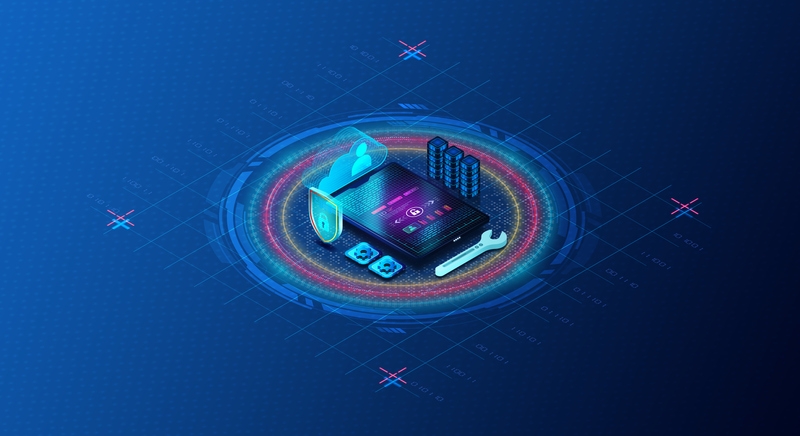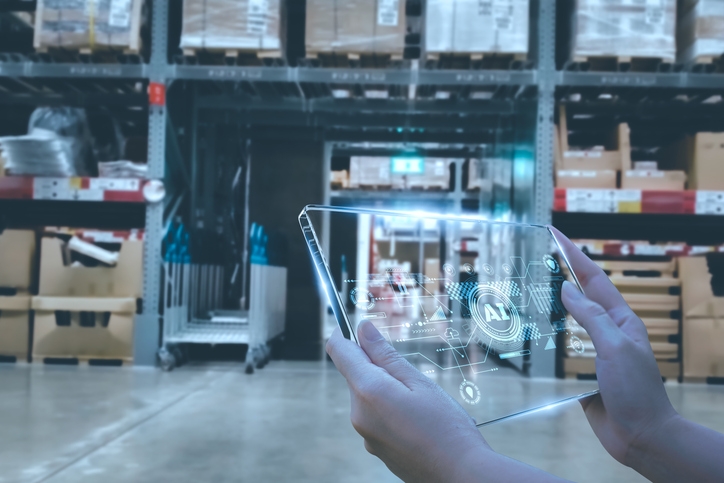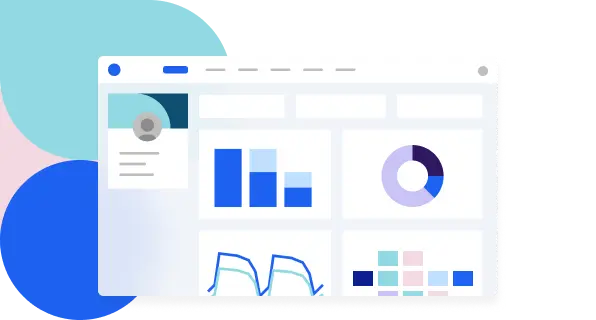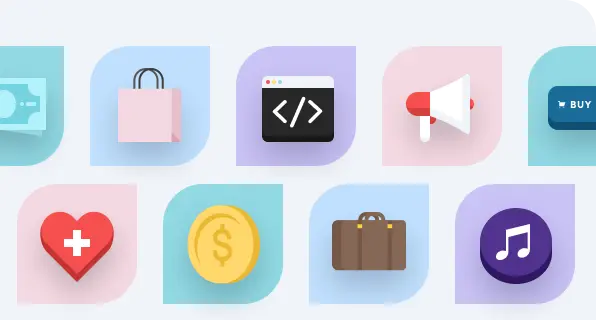10 Event Logistics Wins You Can Achieve with Event Management Software
Discover how event management software can streamline logistics, boost productivity, and enhance collaboration. Read on to optimize your event planning.

10 Event Logistics Wins You Can Achieve with Event Management Software
Introduction
Event logistics can either fuel event success—or derail your team in last-minute chaos. From scheduling to check-ins, staffing to vendor coordination, every moving part needs to work together. That’s where event management software logistics comes in.
Whether you're managing a high-impact corporate summit or a multi-day hybrid event, software can streamline the entire event planning and execution process—giving you centralized control, real-time visibility, and automation where it matters most.
In this guide, you’ll learn how to simplify your event logistics with the help of modern tools—covering every phase from initial planning to post-event reporting. We’ll walk through the top features to use, how to maximize operational efficiency, and practical steps to enhance both attendee experience and team collaboration.
If you're an event organizer looking to cut through complexity and boost outcomes, this is your roadmap.
10 Ways To Streamline Event Logistics Through Event Management Software
1. Start with a Clear Event Logistics Plan (and Let Software Do the Heavy Lifting)
Kick off your event planning by mapping key logistics, timelines, and team responsibilities. Use event management software to centralize the process from day one.
Why It Matters:
A strong logistics plan is the foundation of successful event planning. Without it, even the best marketing or content won’t deliver the intended event experience.
Execution Steps:
- Define event objectives and break them down into logistics needs:
- Venue selection
- Vendor coordination
- Equipment rentals
- Transportation and accommodation
- Staffing plans
- Contingency planning
(Pro Tip: Tie each logistic element to a specific event goal or attendee experience KPI.)
- Centralize your planning using an event management software logistics platform:
- Create a master logistics timeline
- Assign responsibilities to team members
- Link dependencies (e.g., catering setup cannot happen before AV rigging)
- Create task templates for repeatable processes
Save time by using or customizing templates within your software for check-in workflows, venue setup, and exhibitor management.
Checklist: What Your Initial Logistics Plan Should Include
- Event date and venue availability
- List of vendors, suppliers, and their deadlines
- Permits, licenses, insurance needs
- Onsite infrastructure (power, Wi-Fi, accessibility)
- Emergency and backup protocols
Suggested Tools:
Platforms like Azavista provide built-in logistics planning features, task automation, and real-time collaboration across teams.
2. Use Event Technology to Streamline Scheduling and Task Coordination
Avoid missed deadlines by assigning roles, automating reminders, and syncing calendars—all within your event management software.
Why It Matters:
With dozens of vendors, partners, and staff involved, managing events without centralized coordination leads to confusion and missed deliverables. Event technology helps ensure seamless execution through visibility and automation.
Execution Steps:
- Assign tasks and deadlines in your event planning software:
- Break tasks down into phases (e.g., pre-event, event day, post-event)
- Assign owners, due dates, and reminders
- Link dependencies to avoid scheduling conflicts
(Example: Speaker slide collection must be done before AV testing.)
- Enable real-time calendar sync and notifications:
- Integrate your event management software with team calendars (Google, Outlook)
- Use built-in Gantt charts or Kanban views to visualize the entire schedule
- Set automated Slack or email reminders 24-48 hours before deadlines
- Use scheduling to enhance operational efficiency:
- Schedule venue walkthroughs, rehearsals, and tech tests in advance
- Allocate buffer times between sessions for resets or overruns
- Schedule volunteer shifts and breaks without overloading anyone
Tip for Event Planners:
Color-code your calendar by team (logistics, marketing, AV, F&B) to avoid overload and confusion. Use the software’s tagging or filtering features to surface only what matters to each group.
Benefits You Unlock:
- Fewer missed deadlines
- Clear communication across all stakeholders
- Greater operational efficiency and visibility into bottlenecks
Suggested Tools:
Use tools like Azavista with your event management process to keep your logistics running on time—and your event team focused on the big picture.
3. Centralize Vendor, Venue & Partner Communication with One Dashboard
Replace scattered emails and WhatsApp threads with structured workflows to streamline vendor management and improve operational efficiency.
Why It Matters:
Vendor miscommunication is one of the most common reasons events fall behind schedule. Whether you're securing the right venue, working with sponsors, or coordinating guest speakers, having all discussions and files in one place enhances smooth event execution.
Execution Steps:
- Use event management software to centralize all communication:
- Create a separate channel or dashboard for each vendor or partner
- Store contracts, payment terms, timelines, and delivery checklists in the platform
- Log all communication (emails, call notes, change requests) for easy access
- Map key milestones during the planning stage:
- Venue walkthrough dates
- AV setup and testing
- Catering deadlines
- Breakout session requirements and F&B coordination
- Partner activations and booth installs
- Use automation to reduce manual work:
- Trigger auto-reminders for deadlines or missing documentation
- Share read-only venue maps, event schedules, and load-in instructions
Key Elements to Track:
- Confirmation of venue availability and power/Wi-Fi specs
- Sponsor deliverables (banners, lead scanners, giveaways)
- Guest speaker logistics (arrival times, tech needs, stage flow)
Pro Tip:
Assign a dedicated partner success manager on your team to oversee clear communication channels. This is especially important for small businesses managing many tasks with fewer resources.
Results You’ll See:
- Better vendor accountability
- Smoother planning process
- Stronger relationships for future events
4. Automate Attendee Check-In & Badge Printing to Avoid Long Lines
Ditch paper sign-in sheets and deliver a faster, smarter arrival experience with automated check-in solutions.
Why It Matters:
The check-in process is your attendees’ first impression. A chaotic entry experience can damage attendee engagement before the event even begins. A smooth, tech-enabled entry sets the tone for a seamless experience and stronger lead generation.
Execution Steps:
- Enable digital pre-registration through your event platform:
- Collect attendee data in advance
- Offer add-ons like breakout session selection, dietary preferences, or early access
- Deploy contactless check-in options on the day:
- Use QR code check-in or facial recognition
- Allow attendees to print badges instantly from kiosks
- Provide mobile-friendly passes via your event app
- Optimize staffing and signage:
- Create multiple lanes: General Admission, VIPs, Sponsors, Guest Speakers
- Staff each lane with trained team members who can assist with tech errors
- Place directional signage and live polls to engage attendees while they wait
Post Event Metrics to Track:
- Check-in speed per attendee
- Average wait time
- Badge reprint rate
- No-show percentage for future post event analysis
Pro Tip:
Automated check-in can save hours of manual work and cut queues by up to 70%—especially helpful when facilitating networking opportunities or managing tight event schedules.
Results You’ll See:
- Higher guest experience scores
- Better data collection for event surveys
- Stronger first impression for sponsors and partners
5. Enable Real-Time Contingency Planning with Event Software
Stay ahead of problems with live dashboards, fast alerts, and a command center approach that ensures smooth execution even when things go off-script.
Why It Matters:
No matter how meticulous your planning, things can go wrong—Wi-Fi crashes, a speaker cancels, or AV systems glitch. Using your event management software as a real-time command center allows you to fix issues before they affect the attendee experience.
Execution Steps:
- Set up real-time monitoring dashboards inside your platform:
- Assign team members to update checklists as tasks are completed
- Monitor setup status by zone (registration, AV, sponsor booths, catering)
- Flag issues using color-coded urgency tags
- Build your contingency planning workflows into the system:
- Include backup vendors and AV plans
- Pre-schedule alerts for missed setup milestones
- Assign backup contacts for critical roles
- Use live communication tools for quick updates:
- Slack channels or WhatsApp groups by zone
- Emergency escalation paths documented in the event app
- Push alerts to staff and attendees if there's a schedule or room change
Key Metrics to Review Post Event:
- Number of escalations resolved within 15 minutes
- Tasks completed on time vs. delayed
- Impacted attendee zones (to evaluate experience gaps in post event logistics)
Pro Tip:
During advance planning, simulate a worst-case scenario drill (e.g., power outage) with your internal team to assess preparedness.
Results You’ll See:
- Fewer attendee disruptions
- Stronger event lifecycle insights for your next event
- Better preparedness = less stress and stronger event success
6. Optimize Guest Experience with Onsite & Mobile Event Apps
Give attendees mobile access to schedules, speaker bios, maps, and networking tools to make navigation and participation effortless.
Why It Matters:
A well-designed mobile event app isn’t just a convenience—it’s a core tool for enhancing the guest experience, improving engagement, and enabling event organizers to manage real-time updates. For memorable events, attendees need easy access to the most relevant content and touchpoints.
Execution Steps:
- Before the Event:
- Choose an event app integrated into your event management software.
- Upload session schedules, speaker bios, venue maps, and sponsor info.
- Enable networking features like in-app chat, matchmaking, and QR-based lead exchange.
- Allow users to create personalized agendas and bookmark sessions or exhibitors.
- Onsite Setup:
- Provide QR codes at check-in counters and info desks for quick app downloads.
- Use push notifications for room changes, session reminders, or flash promotions.
- Include interactive venue maps to support large-scale event logistics planning.
- During the Event:
- Use live polling, session Q&A, and gamification to drive engagement.
- Allow attendees to submit instant feedback and session ratings.
- Offer support through in-app messaging or a help desk feature.
Pro Tip:
Enable “smart networking” features that match attendees by job title, interests, or goals—helping them make the most of networking opportunities.
Results You’ll See:
- Enhanced attendee satisfaction and event experience
- Improved session attendance and content engagement
- Valuable data collection for post-event analysis
7. Use Software to Stay Within Budget (Even Under Financial Constraints)
Track expenses, vendor payments, and unexpected costs in real time. Get alerts before overspending and maintain full financial control.
Why It Matters:
Staying within your event budget is critical for delivering memorable events without compromising quality. When you track costs in real time, you can make informed decisions—especially when working with financial constraints.
Execution Steps:
- During Initial Planning:
- Set a clear event budget with categories (venue, AV, marketing, F&B, contingency, etc.).
- Use software to input estimates and assign spending caps to each area.
- Link each line item to a goal (e.g., “lead gen,” “guest experience,” “brand activation”).
- Expense Tracking Tools:
- Log vendor invoices and payment milestones into your event management platform.
- Connect software to accounting tools for real-time syncing (e.g., QuickBooks, Xero).
- Enable alerts when spending nears category limits or if additional approvals are required.
- Live Budget Management During the Event:
- Record onsite costs (last-minute rentals, transport, etc.) as they happen.
- Track cost per attendee and ROI in real-time based on registration data and lead generation.
- Prepare reports for key stakeholders with insights on where you saved or overspent.
What to Watch:
- AV overages due to scope creep
- Catering inflation or add-ons
- Last-minute logistics and overtime labor
Pro Tip:
Build a “flexible buffer” line into your budget for reactive expenses—then track how much of it gets used to improve event planning process accuracy in the future.
Results You’ll See:
- Fewer surprises in final spend
- Greater clarity for clients and sponsors
- Smarter financial forecasting for future event logistics planning
8. Improve Team Collaboration and Event Communication
Use software to streamline messaging between staff, vendors, and volunteers—reducing confusion and improving coordination during execution.
Why It Matters:
Great events don’t happen in silos. From initial planning to execution, every team member needs clarity on responsibilities, timelines, and emergency protocols. Using the right tools for internal communication avoids breakdowns that derail event success.
Execution Steps:
- Set Up Communication Channels by Function:
- Create group chats for registration, AV, catering, logistics, and VIP handling.
- Use Slack, Microsoft Teams, or your event platform’s built-in messaging tools.
- Define escalation paths and key points of contact per zone.
- Use Software to Sync Schedules and Tasks:
- Link calendars and assign due dates with real-time notifications.
- Share updated timelines, run-of-show documents, and contact lists.
- Allow team leads to log updates or check off tasks during the live event.
- Onsite Coordination Tactics:
- Equip leads with mobile devices to receive updates on the move.
- Send schedule change alerts instantly to staff and vendors.
- Document handoffs and zone checklists in the event app dashboard.
Pro Tip:
Schedule daily 5-minute stand-up meetings or mid-event check-ins for realignment—especially during multi-day events or hybrid formats.
Results You’ll See:
- Faster response to live issues
- Reduced last-minute confusion
- Stronger alignment across all teams involved in event registration, guest services, and content delivery
9. Capture Post-Event Insights with Analytics & Reporting Tools
Use your event management software to gather feedback, track attendee behavior, and evaluate success across every touchpoint.
Why It Matters:
Without strong post-event analysis, you're guessing what worked. Careful planning must be followed by structured reflection—using real data to shape your next event’s strategy. This step helps you measure ROI, refine messaging for your target audience, and generate leads more effectively for future events.
Execution Steps:
- Set Up Your Reporting Framework in Advance:
- Define which KPIs you’ll measure (attendance rate, check-in speed, engagement level, session popularity, survey results).
- Link data points to key event objectives—e.g., if a goal was to drive revenue, track booth leads or product demo conversions.
- Automate Data Collection During the Event:
- Use built-in analytics in your event management software to track:
- Attendee tracking for check-in timestamps
- App usage and feature engagement
- Poll responses and live Q&A activity
- Session attendance vs. registration
- Use built-in analytics in your event management software to track:
- After the Event:
- Launch post-event surveys to gather feedback from attendees, sponsors, and vendors.
- Use NPS, open-ended responses, and rating scales to identify what resonated with your target audience.
- Generate visual reports for leadership, clients, or your internal team.
Pro Tip:
Break your post-event data down by audience segment (e.g., first-timers vs. returning attendees) to discover patterns and tailor your follow-up strategy.
Results You’ll See:
- Clear understanding of what drove engagement
- Actionable insights for your event planning process
- Better content, layout, and communication strategies for future events
10. Choose an Event Management Platform That Matches Your Goals
Your software should reflect your event’s complexity and scale—whether you're managing a simple seminar or a multi-day hybrid expo.
Why It Matters:
The platform you select is your infrastructure. The right tool will improve operational efficiency, unify team workflows, and support detailed planning—while the wrong one creates friction and limits your growth.
What to Look For:
- Logistics-first features:
- Centralized task management
- Floor plan mapping and load-in schedules
- Onsite check-in, badge printing, and staffing tools
- Strong attendee experience capabilities:
- Mobile app with personalized agendas, live polling, and matchmaking
- Built-in networking tools and lead scanning
- Customizable registration forms and branded communications
- Virtual & hybrid support:
- Seamless streaming integrations
- On-demand session replays
- Engagement tracking for remote attendees
- Integrations that scale with your needs:
- CRM and marketing automation tools for lead follow-up
- Payment gateways and ticketing platforms
- Analytics dashboards for real-time and post-event tracking
Pro Tip:
Demo multiple tools with a test use case. Choose the platform that most closely aligns with your event goals, not just your current event size.
Results You’ll See:
- More efficient teams
- Seamless delivery across event formats
- Tools that grow with your strategy—not hold it back
Conclusion: Simplify Planning and Scale Success with Smart Tools
With the right event management platform, you’re not just planning—you’re building better experiences, optimizing operations, and making decisions based on data.
By leveraging smart tools from initial planning through to post-event reporting, you’ll:
- Streamline event logistics and improve internal communication
- Ensure seamless execution of even the most complex live or hybrid experiences
- Enhance attendee experience with personalized content and smooth navigation
- Gather feedback, analyze engagement, and shape future events around real insights
- Drive revenue and generate leads with better follow-ups and post-event campaigns
No matter your event type or size, combining careful planning with the right technology gives your team a competitive edge—and ensures every event leaves a lasting impression on your target audience.
More Event Management












